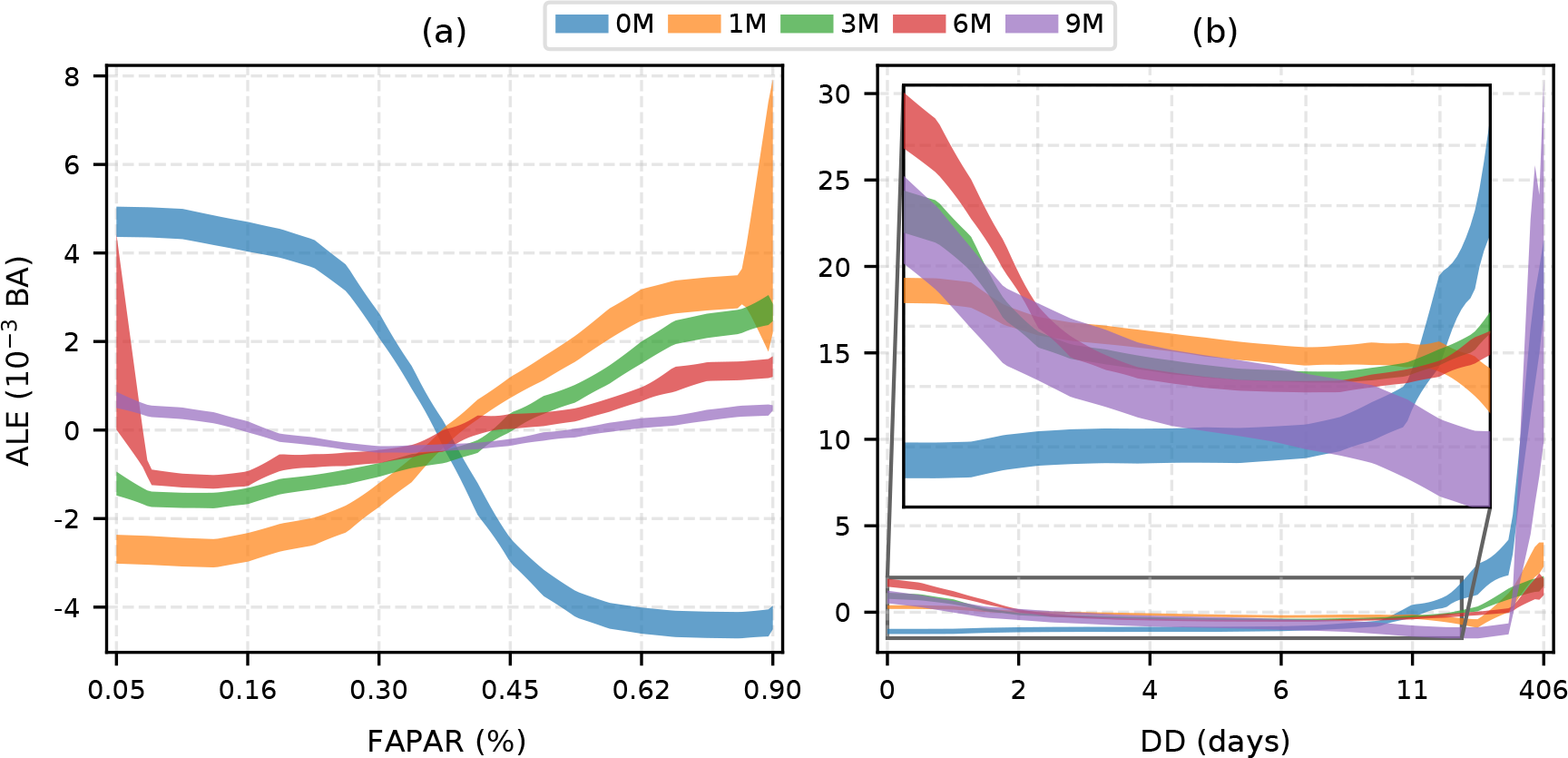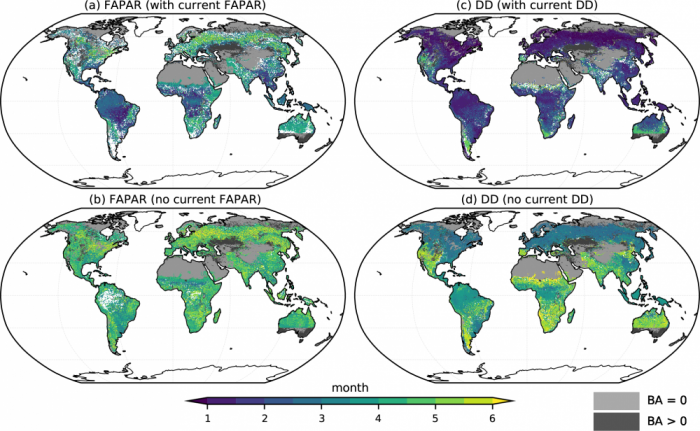by Alex Kuhn-Regnier
Alex Kuhn-Regnier is a PhD student at Imperial College London based in the Department of Physics. He investigates wildfire models and how to improve the representation of the ecological impacts of future wildfire changes.
My PhD began by asking the question “What are the fundamental drivers of wildfires?” Far from being the first to ask it, I searched for an aspect of this question that had not been investigated in much detail before. As part of recent investigations into the performance of fire models—especially the lack thereof—it has been found that empirical relationships between vegetation and burnt area (BA) are not represented accurately by contemporary fire models (Forkel et al. 2019). This, combined with previous findings that antecedent vegetation has a significant influence on burnt area, provided the impetus for the first paper of my PhD, titled “The importance of antecedent vegetation and drought conditions as global drivers of burnt area” (Kuhn-Régnier et al. 2020).
In addition to quantifying the relative importance of (antecedent) vegetation for burnt area, our goal was to quantify the relative importance of different timescales, and how this varies regionally. This was to facilitate the application of our results to an improved version of the INFERNO (Interactive Fire and Emission Algorithm for Natural Environments) fire model at a later stage of my PhD.
Because INFERNO is a simple statistical fire model, we started by using Generalized Linear Models (GLMs) to analyse satellite data, since this would allow for the easiest transition of the discovered relationships to the model. However, we soon realised that while the relationships extracted by GLMs would be easy to “plug into” a statistical fire model, they might not be sufficiently representative of the real underlying processes that govern fire (including the myriad interactions between drivers and the associated non-linearities, for example). Therefore, we transitioned to using Random Forest (RF) models instead of GLMs due to their superior flexibility.
The downside of this approach is of course that a more complicated model is also harder to explain. However, given the goal of my PhD, it was key to explain why certain predictions are made! Thus, we employed a variety of techniques to “peek into the black box”, to explain both the importance of different drivers for the prediction of burnt area, and the underlying relationships between these drivers and burnt area. A key technique we employed was accumulated local effects (ALEs) which are expected to have many advantages over the more traditional partial dependence plots (PDPs) when used to explain models trained on highly correlated data (Apley and Zhu 2020).
We began by training an RF model on all variables, including versions of vegetation and dry-day period that were shifted in time to represent the antecedent states, yielding 50 variables in total. Then, we checked if this model could accurately predict burnt area. As seen in Fig. 1, this is indeed the case, with the geographical pattern of burnt area reproduced well by the model.

Figure 1: The observed (a) and predicted (b) Burnt Area (BA), with relative errors shown in (c). Predictions by the ALL RF model and observations are qualitatively similar, but low observed BA is overpredicted by the model, while high BA is underpredicted.
We investigated four chosen vegetation variables:
- FAPAR – Fraction of absorbed photosynthetically active radiation
- LAI – Leaf area index
- VOD – Vegetation optical depth
- SIF – Solar-induced chlorophyll fluorescence
To determine which of these performed best as a fuel build-up proxy, we trained RF models that included only a single one of these (including antecedent versions and other important non-vegetation variables). This revealed that on a global, climatological scale, FAPAR performed best, followed closely by LAI. Other insights from these experiments included the finding that lightning was not significant, supporting previous findings that natural ignitions do not limit global fire occurrence (Bistinas et al. 2014).
Analysis of the underlying relationships fitted by the model using the aforementioned ALEs technique revealed that, on average, there exist consistent, intuitive differences between instantaneous and antecedent relationships with burnt area (see Fig. 2). For example, the instantaneous effect of FAPAR on burnt area is limiting due to the effect that high FAPAR has on fuel moisture. Antecedent FAPAR has the opposite impact, since large antecedent FAPAR signifies fuel build-up prior to the fire season.
Similar but opposite relationships can be seen for the dry-day period too, with the exception that for very large dry-day periods there is a consistent positive effect on burnt area, likely denoting the impact of extended droughts on fire. While we are able to estimate how much these relationships might vary between locations and times by subsampling the original dataset (as apparent from the width of the shaded regions in Fig. 2), this does not reveal the full degree of potential grid-cell level discrepancies.
Nonetheless, we are confident that these relationships can be adapted to be used in an updated version of the INFERNO fire model, especially since we plan to use slightly different relationships for different PFTs, thereby accounting at least partially for the underlying inhomogeneities that result in the observed regional and temporal differences.

Figure 2: Relationships between FAPAR (a) and dry-day period (b) with BA, taking into account all other variables using the ALEs technique. A clear difference between instantaneous and antecedent relationships can be seen in both cases, with instantaneous FAPAR limiting BA while antecedent FAPAR promotes BA, and vice versa for the dry-day period. Note that the enhancement of BA due to extreme droughts (extreme dry-day period) is apparent across time periods.
Feature Image: Most important timescales of FAPAR (a, b) and dry-day period (c, d) for the prediction of BA. Instantaneous FAPAR is most important in tropical regions, while antecedent FAPAR is most important in other regions, on a timescale of ~3-4 months. Instantaneous dry-day period is most important globally, while antecedent dry-day period between 4-5 months is most important globally.
Contact Alex at alexander.kuhn-regnier14@imperial.ac.uk






